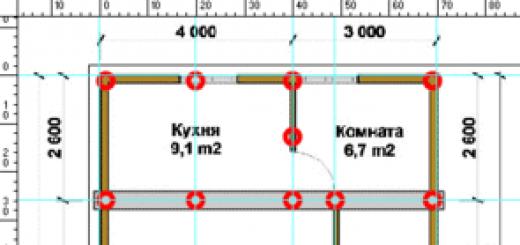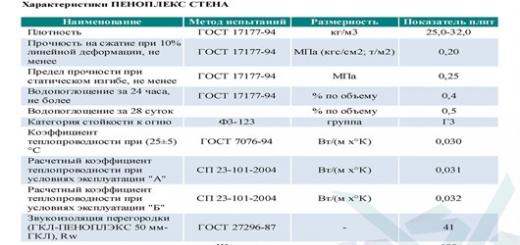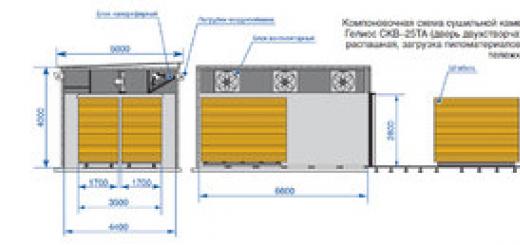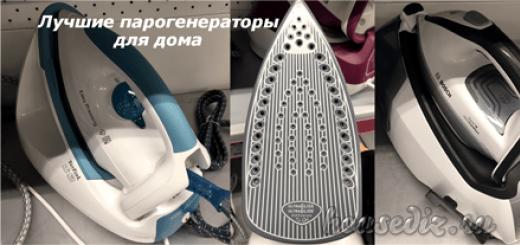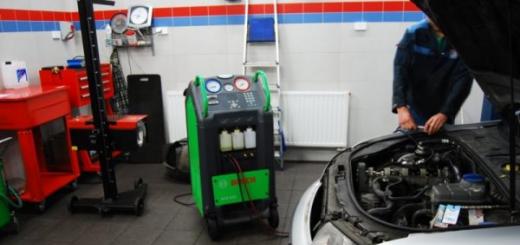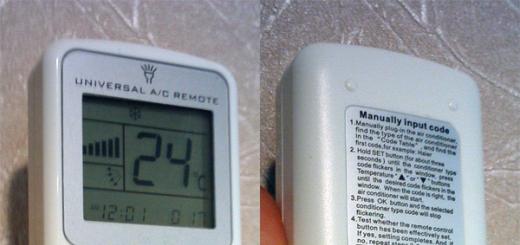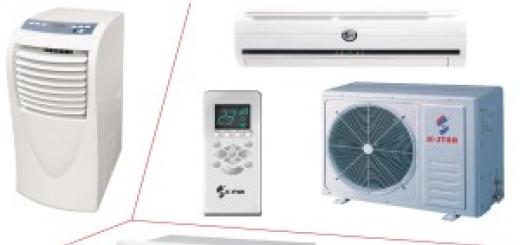High inrush current is a problem for systems with maximum power limitations. The machine may trip and the uninterruptible power supply system may go into overload mode. What should I do?
A good solution would be to use a soft starter (soft starter). For example, we have a single-phase submersible pump with a power of 1 kW, located in a well at a depth of 50 meters. To start its engine, 4-6 times the starting current will be required, i.e. The system must withstand a short-term power of about 5 kW. Let's say, an inverter rated at 3 kW simply will not be able to start. The moment of start will also be accompanied by a sharp increase in pressure, which actually means a water hammer on the water supply system.
We will insert a soft starter into the line supplying the pump. The device will gradually increase the voltage within a specified time (usually up to 20 seconds), which will allow the pump to spin the impeller with acceleration, without jerking. As a result, we equated the starting current to the nominal value, i.e. it amounted to 1 kW and significantly extended the life of the submersible pump (the service life increases by about 2 times, taking into account the cost of the pump, the decision to use a soft starter, even in the absence of an energy backup system, becomes obvious):

Let's imagine a connection diagram that can be used with both single-phase and three-phase equipment:

Are there any restrictions for using a soft starter? Yes, there are some and you should know about them:
1) The soft starter cannot be used with refrigerators. High starting current is required to stall the compressor valves.
2) Likewise for air conditioners and other equipment
If you have any questions, I’ll be happy to answer in the comments!
Read also:
- Is it possible to save on electricity using...
If you look at the submersible from a technical point of view, you will have to agree that it is a very high-tech unit:
- with small overall dimensions it provides high productivity;
- able to work for long periods of time in relatively difficult conditions.
The cost of a well pump is relatively high, and installation in a casing is complicated. This leads to the conclusion: a well pump is equipment that you should try to repair and replace as little as possible. And for this it is necessary to create optimal operating conditions for it, then the equipment will last as long as possible without breakdowns or failures.
Factors affecting the service life of a well pump
Any electric motor (and a pump is, in fact, an electric motor) experiences maximum loads at the moment of startup. The less often the engine is turned on, the longer it will last. That is why the water supply scheme for a country house provides a storage tank - simple or hydraulic accumulator - so that the pump can pump as much water as possible in one cycle of operation.
In this case, the well pump will only be activated when the water level in the storage tank drops. If there is no container with a supply of water, the pump motor will start every time at least one water collection point is activated.
The second negative factor is inrush currents, which are several times higher than the rated ones. This is due to the inertia of the mechanical part of the electric motor, when the rotation of the components begins a little later than the power supply. With frequent starts of pumping equipment and the constant occurrence of high starting currents, the protective function of the insulation of the motor windings gradually decreases due to high thermal loads. And this is already fraught with a short circuit and, as a result, breakdown of the pump.
Methods for compensating for high inrush current
To reduce the starting current, it is necessary to install a soft start system. We bring to your attention two types of borehole pump soft start systems:
- Smooth SS start-up using a special control panel for well pumps produced by domestic manufacturers (automatic control and protection stations of self-propelled guns "Cascade" and "Vysota") and foreign (Pedrollo, Grundfos and some others).
- Starting the well pump motor using a frequency converter.
The principle of supplying power to the pump using electronic ACS stations is an automatic smooth increase in voltage, regulated by phase control. By means of frequency conversion, the starting current is kept at the rated level.
Main functions of the self-propelled guns:
- automatic (with the ability to switch to manual mode) start and stop of the pump at the command of a relay that determines the water level in the storage tank;
- remote pump control;
- pump protection and power off in case of short circuit, phase imbalance and overload;
- Dry running protection.
The disadvantages of self-propelled guns include the high cost of equipment.
Do you know?
Some manufacturers of well pumps offer models with a built-in soft start system. For example, Grundfos SQ and SQE series.
"Why is it necessary to ensure a smooth start of a well pump" BC "POISK", tell friends: January 3rd, 2016
Water supply for a private home. Principle of operation. Connection diagram.
The most common option for automatic water supply is as follows.
Water supply scheme for a private house:
More details in the video:
Can't watch the video? See the black square
Description of circuit elements
Submersible pump rotary has protection against dry running. Dry running protection works as follows: The power supply to the pump is switched off via a thermal relay. This thermal relay is built into the submersible pump. Therefore, when you buy a submersible pump, make sure from the pump seller that the submersible pump has a thermal relay built into it. Therefore, a dry-running relay is not required.
Other dry running protection methods
Thermal relay design: The thermal relay has a special design that, under the influence of temperature changes, changes the position of the electrical contacts. The contacts in turn make or open contacts. And if the engine overheats, the thermal relay turns it off. Deviation of contacts can be caused by a change in the position of the contacts using a special alloy of two layers having different thermal characteristics due to which the contacts are deflected. Or due to a special gas, which expands when heated and deflects the contacts. In any case, the principle is the same: When the temperature rises, turn off the pump.
Operating principle of a thermal relay: The overheated electromagnetic windings transmit the temperature to the thermal relay and the relay turns off the pump. And if there is no water, then the thermal relay receives a high pump overheating temperature. That is, if the engine jams, there is no water movement or there is no water, then the engine overheats greatly and heats up the thermal relay, and the relay in turn turns off the pump. After about 5-10 minutes, the thermal relay cools down and the pump turns on again. This is the basis of the principle of protecting the pump from dry running.
Smooth start of pumps. Some submersible pumps have a soft start. Soft start is the ability of the pump to operate at full power not immediately, but with a gradual increase in power. Usually the pump I know works like this: from 0 to 2 seconds the power increases in proportion to the time passed (0 sec=0% W, 0.5 sec.=25% W, 1 sec.=50% W, 1.5 sec.=75 % W, 2 sec = 100% W).
Moreover, the soft start and thermal relay are already built into the submersible pump and are located in the well and do not require additional expensive automation. A smooth start of the pump is required if you have a long pipeline from the well to the house. If the pipe length exceeds 30 meters, then you should be wary and buy a pump with a soft start. That is, 2 seconds of soft start will suit pipe lengths from 30 to 100 meters of pipe. If the length of the pipes exceeds 100 meters, then a more accurate calculation of pump and pipeline overloads should be made, including calculation of pump flow.
Contact a specialist for calculations: Order a settlement service
Pump with thermal relay and soft start: Downhole pumps Grundfos SQ, SQE, download data sheet:
Grundfos SQ pump instructions

By the way, Grundfos SQ, SQE well pumps have a small enough diameter to fit all narrow wells with a small diameter. Sometimes it happens that a well is made from two pipes of different diameters. A pipe with a small diameter is located deep. Therefore, Grundfos SQ, SQE pumps will help in such cases. The pump diameter is 74 mm. Minimum borehole diameter 76mm
Pump with built-in check valve. Many manufacturers, including Grundfos, supply their pumps with check valves. But if it is necessary to remove this reverse, then this can be done. The instructions indicate to simply bite through the supports that hold the valve and remove it from the pump.

Removing the check valve is necessary in cases where it is necessary to create conditions under which it would be possible to release water back into the well in order to leave the pipeline without water. (for winter conditions when the heating is turned off). At high altitudes, water hammer may occur.
Check valve

Many experienced plumbers may suggest installing a mesh wash filter in place of the mud filter - I will say that this is a trivial waste of money. Also, the washing filter differs in degree of cleaning by a maximum of two times. That is, the degree of purification of the mud filter is 500 microns. And the washing one is 200 microns.
Pressure switch

Over the years, the pressure switch becomes clogged with small crumbs (garbage) and the relay begins to jam. This is due to the fact that tiny grains of dirt accumulate in the pressure switch chamber. In this regard, the mechanism cannot move to the required value to turn on the pump. Sometimes pollution accumulates even after one year, and sometimes even 10 years is not enough for a blockage. That is, everything depends on underground water. These clogs can be caused by steel pipes that release rusty debris over the years.
The mud filter does not help to avoid this. Even if you install a fine filter in front of the pressure switch, you will still have an accumulation of tiny debris in the pressure switch chamber. I had a client, and I made him an automatic with a filter in front, practice showed that it did not help.
Case study:

That is, the fine filter cannot cope with fine debris.
There is one way out (against clogging of the pressure switch), this is to move the pressure switch to a separate branch of the pipeline. And prevent the entry and settling of the smallest debris.

The smallest debris will not be able to rise up and part of the water space and the mud filter will not be able to mix the smallest debris to settle in the pressure switch chamber.
Operating principle of a pressure switch

This device has on and off thresholds. That is, when the lower pressure threshold is reached, the contacts close, and when the upper pressure threshold is exceeded, the contacts open. Thus turning the pump on and off.
Example of pressure switch operation (sequential action)
The pressure is 0 Bar => Relay contacts are closed => Pump power supply is 220 Volts => Pressure increases => Reaching 2.8 Bar the contacts open => Pump power supply stops => The pump does not work.
Water consumption => Pressure drops => Reaching 1.4 Bar, the contacts close => Pump power is 220 Volt => Pressure increases => Reaching 2.8 Bar, the contacts open => Pump power is stopped => The pump does not work.
By default, these thresholds are: (Factory settings) Lower 1.4 Bar, upper pressure threshold is 2.8 Bar. Pressure range 1-5 Bar.
Download instructions for use of this relay PM5 and RDM5: Pressure switch instruction manual
Setting up the pressure switch

If globally: The pressure differential adjustment nut increases or decreases the difference between the on/off thresholds. That is, if you tighten the spring, the difference between the thresholds (P2-P1) will increase.
Example of setting a small spring,
P1 – Lower switching threshold (contact closure) (default P1=1.4 Bar)
P2 – Upper shutdown threshold (opening contacts) (default P2=2.8 Bar)
P3 – Difference between thresholds (P2-P1)=(2.8-1.4)=1.4 Bar
The example of tightening a small spring causes P1 to increase and P2 to increase. The only difference is that P2 will increase more. As a result, we get an increase in the difference between P1 and P2. The difference is (P2-P1).
Suppose the pressure P1 increased to 1.6 Bar? while P2 increased to 3.4 Bar. (3.4-1.6)=1.8 Bar. Thus, we increased the difference between the thresholds (P2-P1).
Example of setting a large spring,
By tightening the large spring, we increase the pressure of both thresholds with the only difference being that P1 increases more. That is, we regulate the pressure threshold P1 more.
Bottom line: A large spring has a greater effect on P1, and a small spring has a greater effect on P2.
Example of setting both springs
1. First, set the lower threshold P1. We increase or decrease the force of the large spring, achieving the desired pressure.
2. Then we set the upper threshold P2. We increase or decrease the force of the small spring, achieving the desired pressure.
3. When adjusting the small spring, the lower pressure threshold P1 changed. The tuning cycle is repeated to achieve the required thresholds.
Electrical diagram for connecting a pressure switch

Grounding to a greater extent protects a person from electric shock in cases of phase contact with the housing. It also protects devices from side effects of phase contact with the housing. And only if there is a differential circuit breaker in the electrical unit system. Which will register the phase-ground contact and turn off the power supply to the network.
If you do not connect the ground (Pe) contact, the pump will still run. Because most often, grounding serves to protect a person from electric shock and side effects of phase-ground contact (housing).
Filters

As you can see, their choice is large, and for main filters with good throughput, a diameter of at least 1” inch (inner diameter = 25mm) is selected.
The following main filters (kristal) are suitable for our circuit:

Only mechanical cleaning cartridges are inserted into them:

Cartridges for chemical and other cleaning are not inserted into main flasks. In order to purify water for oral administration, 3 or 5-stage filters are used to obtain drinking water. More details:
Filters for water purification
Mechanical (fine) cleaning cartridges are used with a throughput from 5 to 20 microns (micrometers). 1 mm.=1000 microns. This is much less than what mud filters (500 microns) and wash filters (200 microns) provide. This means that it is possible to obtain more purified water from fine-grained sand.
Why shouldn’t filters be installed ahead of automation? Filters such as mud filter, wash filter and main fine filters.

Answer: Because the filter creates hydraulic resistance. The mud filter and wash filter can reach 10, the fine filter can reach 1 or more, depending on how clogged the filter is.
That is, there should be no elements on the pump-hydraulic accumulator line that create obvious hydraulic resistance. Since the flow rate on the accumulator pump line should always be good. If the filter is clogged, this will cause the pump to work under load. Debris getting into the hydraulic accumulator is not a big deal.
But a mud filter can be installed, since during installation or repair various debris can get into the pipeline. This dirt filter will keep unexpected debris out. Also, the mud filter with 500 microns does not become clogged, since the submersible pump already has a mesh filter. As a result, the mud filter at the inlet only serves as a guarantee against unexpected debris in the system.

As already mentioned in this diagram, there is no mud filter on the pump-hydraulic accumulator line, which increases the throughput. And the mud filter on the pressure switch line serves as a kind of protection against debris getting into the pressure switch chamber.
Taps on the pump-hydraulic accumulator line are strictly prohibited.

When the tap is closed, the pump will continue to operate and this will cause very high pressures in the pipeline on the pump-hydraulic accumulator line. The pressure switch will not register pressure, since the ball valve will not allow this to be done. Just foolproof yourself and don't install the faucet. Because sooner or later there will be some person who will close the tap while the pump automation is running.
Water hammer protection using a safety valve.

Water hammer can occur if the accumulator goes out of normal operation. That is, when the pump turns on, the accumulator does not take on excess pressure. In other words, this is a kind of pipeline protection against water hammer. Any pressure that may build up will be released through the safety valve.
If the water supply pressure is approximately in the range of 1.5-5.5 Bar. It is not difficult to assume that the response pressure should be 6-7 Bar. To prevent a flood, it is necessary that the pump cannot exceed a pressure of 6 Bar.
In a private home, it is enough to keep the pressure no more than 3 Bar. But if suddenly the pressure switch does not react correctly or does not turn it off before 3 Bar, then it is not unreasonable to assume that the pressure can reach 6 Bar, provided that the pump pressure is sufficient for this. And then there will be later. And to exclude it later, you need to connect the fuse to the sewer pipe. So that excess water goes down the drain.
Flexible hose to hydraulic accumulator

Hydraulic accumulator. Operating principle, purpose and configuration.
In place of the pipeline, you can use a flexible hose. This is a rubber hose covered with steel wire to contain the expansion of the rubber.
We do not use flexible hose for two reasons:
1. It is not always possible to buy it on the market. That is, sometimes you need to try very hard to find the right length and size.
2. Such flexible hoses once showed their inconsistency in the strength of steel. That is, they could simply break or crack over the years, which caused more floods.
Submersible pump
There are two types of submersible pumps, which differ from each other:
1. Baby type vibration pump

2. Submersible rotary pump.

Some pumps have pump dry-running protection. Thermal relay. How a thermal relay works was described above.
They also have a soft start function, for example the GRUNDFOS pump and it is 2 seconds. This function is suitable for those whose pipe length from the well to the house reaches over 30 meters. It was described above.
If you have a choice between pumps: Vibrating and rotary, then choose a rotary pump. A vibration pump is a kind of cheap toy.
Firstly, the vibration pump works like a piston pump in which there is constant vibration. And vibration in some wells is very destructive. Vibration contributes to the rapid growth of sand in the well. And no filters in well pipes will help prevent the collapse of sand and silt. Since today simple holes are made in well pipes. And these holes are not made of mesh. In addition, if your well is located in rocky places, then the pipe is not laid at all. The stone is simply drilled and no pipe is installed inside the stone. And for convenience, a 2-4 meter pipe is mounted on top.
Secondly Baby type vibration pump has a low flow rate of up to 1 m3/hour. in contrast to the most common submersible up to 4 m3/hour.
Surface pump
This is a pump that is located at the top and does not plunge into the well. But such pumps have disadvantages. More on this below.
Selection of diameters
More information about the selection of diameters is written in the sections:
Hydraulics and heating engineering
Water heating designer
Special case
Most owners of private houses will prefer to go to the store and consult with a consultant. The consultants will ask a couple of questions and tell you to buy a self-priming pump. And they will make a fatal mistake.

More information about self-priming pumps: Automatic water supply using a self-priming pump.
A well pump, due to the need to provide high performance with fairly small transverse dimensions, is a complex device that operates under rather harsh conditions. And if we take into account that its installation (as well as dismantling) is quite labor-intensive work, then the reliability of the well pump becomes of paramount importance. One of the factors that has a decisive influence on the operating time of this unit is inrush currents. Due to the fact that the rotating parts of the electric motor and the pump itself have a certain inertia, in contrast to the current (that is, the current value can almost instantly reach very high values), when turned on, starting currents arise that are 4-10 times higher than the rated ones! What if the well pump also turns on frequently? For example, due to a small volume of a diaphragm accumulator or incorrect setting of the pressure switch? It is clear that, in the end, the insulation of the electric motor winding will not withstand such high thermal loads and a short circuit will occur, which will result in failure of the pump. To reduce starting currents, various soft starting systems are used.
Types of soft start
Currently, two soft start systems are mainly used for well pumps:
- 1.Smooth startSS. With this method, using electronics, a smoothly increasing voltage (and therefore a smoothly increasing current) is supplied to the electric motor. Voltage regulation is carried out by phase control. Many control stations (panels) for well pumps, both domestic and foreign brands, operate on this principle: Cascade, Vysota, Grundfos, Pedrollo, etc.
- 2. Soft start using frequency conversion. This method is the most advanced in terms of reducing inrush currents. Frequency conversion allows you to keep the starting current at the rated level. The main disadvantage of control stations (panels) with variable frequency drives is their high cost, comparable to the cost of the pump itself. Among domestic models, it is worth highlighting STEP, SU-CHE, SUN. ASUN. The most popular foreign models are SIRIO and SIRIO-ENTRY 230 of the Italian brand ITALTECNICA. It should be said that the SQ/SQE series well pumps have a built-in soft start system based on frequency conversion.
Benefits of soft starting
- Reduced starting currents (in the case of a variable frequency drive, starting currents are reduced to rated).
- Reduced mechanical loads on the impeller and bearings of the well pump.
- Reducing or completely preventing water hammer that occurs when the pump is turned on. Water hammer negatively affects not only the pump itself, but also the well, causing additional loads on the joints of the casing pipes and causing rapid wear of the filters. As a result, the well begins to sand.
Based on a frequency-controlled soft start system, it is possible to control the power of the pump by changing the rotation speed of its engine. That is, the control system precisely selects the rotational speed of the electric motor, and therefore its power, in accordance with the currently required performance, maintaining constant pressure in the network. In other words, the electric motor uses exactly the amount of electricity needed to provide the required performance and not a joule more. Such a system is implemented in Grundfos SQE series well pumps.
The ES024 series is produced by Effective Systems control stations, capable of combining up to 7 pumps with a rated power from 1.5 to 315 kW, a rated voltage of 380 V into a single system. According to the customer’s technical specifications, it is possible to manufacture control stations other rated powers and voltages.
Depending on the customer’s needs for pump control stations produced by the company "Effective Systems" the following functions can be implemented:
- Setting up to 8 different preset pressure levels that need to be maintained, distributed by time of day;
- The ability to switch the system to “sleep mode” in the absence of water intake or when there is little water intake, which can significantly reduce energy consumption;
- Periodic replacement of pumps to ensure their uniform wear and avoid rusting of backup pumps;
- Control of drainage pumps, allowing you to control the level of wastewater;
- Determining the liquid level and controlling the filling of the tank, allowing you to start the pump depending on the amount of liquid in the tank and replenish its flow at a given supply level;
- Alarm about high and low pressure in the pipeline;
- Storing current parameters of up to 7 pump motors into memory to provide current protection and overload protection for any pump operating at any given time;
- Fault diagnostics, which allows you to automatically identify and exclude faulty pumps from the system operation algorithm.
To receive a technical and commercial proposal, contact us using one of the methods indicated at the top and bottom of this page.
BRIEF REFERENCE: SOFT START OF PUMPS
In practice, the starting current of pump electric motors is 3-5 or more times higher than the rated current. This ultimately leads to increased thermal wear of the insulation of the stator windings (because of this, the service life and reliability of the pump motor are significantly reduced). In addition, if the power of the supply network is insufficient, a short-term voltage drop is possible, and this can negatively affect the operation of other electrical equipment powered from the same network.
Direct start of the pump is harmful both for the unit and for the well as a whole, as it is accompanied by water hammer, which destroys the shut-off valves, the pipeline and the pump itself. When the well pump is started directly, a strong influx of water from the water layer can be observed and this leads to the destruction of the filter zone, and, consequently, to the entry of sand into the well.
The only effective solution to these problems is to implement soft start of the pump, for which a number of technical means have been developed, including soft starters and frequency converters.
The task of soft starters is to provide protection for pumping units from high starting current, mechanical overloads, water hammer, i.e. ensure durability and reliable operation of the equipment. Along with solving the problem of soft starting, the use of frequency converters when operating pumps makes it possible to match the pump performance with the flow rate of the pumped liquid at each moment in time, which can significantly reduce the energy consumption of the system.
